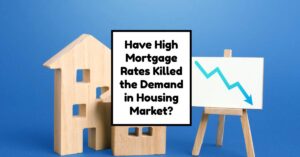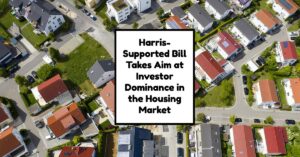As we enter October 2024, the housing market is buzzing with changes, trends, and predictions that can significantly affect buyers, sellers, and investors alike. With a mixture of excitement and caution, many are eager to understand what this month's market behavior means for them.
If you're thinking about buying or selling a place, it's especially important to understand what's going on. So, what's the deal with the housing market this month? Let's break it down and see what's happening.
Housing Market Update: October 2024 Trends and Predictions
Key Takeaways
- Declining Home Prices: Median listing prices have dropped by 0.7% year over year.
- Increased Active Listings: There are 31.9% more homes for sale compared to last year.
- Falling Mortgage Rates: Current mortgage rates are at a two-year low, improving affordability.
- New Listings on the Rise: New listings have increased by 1.7% compared to the previous year.
- Homes Taking Longer to Sell: Properties are spending an average of seven days longer on the market than last year.
Current State of the Housing Market
As we reflect on the data available from the week ending on September 28, 2024, we can see that the U.S. housing market is showing signs of cooling down compared to the frenzy of the previous years. According to Realtor.com, for the 18th week in a row, the median listing price has either dropped or remained stable compared to the same week in 2023.
This trend indicates a shift in seller strategies, with price cuts now affecting about 18.6% of listings. Sellers are recognizing that to compete in a market with increasing inventory, they need to provide attractive pricing to draw in buyers.
The number of new listings in the market has also increased by 1.7% over last year. This growth comes at a crucial time as the Federal Reserve has hinted at possible rate cuts, encouraging sellers to act before they perceive a more favorable market. However, while more homes are coming onto the market, it's essential to consider how this influx will affect prices and buyer competition in the coming months.
Inventory Surge and Home Sales
One of the more notable trends is the active inventory, now standing 31.9% higher than just a year ago. This increase means that homebuyers have more options available than they have seen since pre-pandemic times in early 2020. Interestingly, homes are now spending an average of seven days longer on the market, signaling that buyers are still cautious and waiting for more favorable conditions before making purchases. This mix of more listings and longer sale times showcases a delicate balance in buyer sentiment.
Historically, homes tend to move quickly during the fall months, especially if the conditions favor buyers. It will be interesting to see how the anticipated further decline in mortgage rates impacts buyer activity in the remainder of 2024. As mortgage rates have recently dropped to a two-year low, buyers may begin to re-enter the market with greater confidence, knowing their buying power has improved.
Impact of Mortgage Rates on the Housing Market
Mortgage rates play a vital role in shaping the housing landscape. As they continue to fall, potential home buyers are likely to see an increase in their buying power, which, according to recent analyses, has improved by over $74,000 compared to October 2023. This significant change creates a more compelling case for those considering purchasing a home, especially first-time buyers who might have been sidelined in this market previously marked by high interest rates.
With the Federal Reserve's recent actions, the atmosphere surrounding mortgage rates has shifted towards optimism. Anticipation of further rate cuts before the end of the year has galvanized many sellers who had previously been unwilling to enter the market. The trend suggests that as sellers feel more “unlocked” with decreased rates, they are more likely to list their homes, adding even more inventory just as buyers may be returning.
Long-Term Price Trends and Predictions
Looking ahead, while current conditions show declining prices, several factors lead many experts to predict a potential reversal in the trend as we move into 2025. According to the CoreLogic Home Price Index, although home price gains slowed during the peak of interest rates, there’s an expectation for prices to increase by about 4.6% on average in 2024. This projection is supported by a combination of factors including increased buyer demand, decreased mortgage rates, and the historical seasonality of the housing market, which often sees price increases in spring.
It's important to understand that this projected growth won't be uniform across the country. Markets like New York, Las Vegas, and Los Angeles continue to show strong annual gains, forecasting resilience in those areas even as other regions experience slower growth.
Regional Variances in Home Price Appreciation
The diversity of home appreciation across various metropolitan areas further illustrates the complexity of the current housing market. For instance, Cleveland has presented the strongest price growth in recent months, whereas Denver and Portland have lagged with minimal appreciation. Such geographical disparities suggest that buyers and sellers should stay informed about their specific markets rather than relying solely on national trends.
Moreover, the mismatch in supply and demand continues to exert pressure on prices. While buyers are increasing in number due to favorable borrowing conditions, the pace is likely to be tempered by concerns about affordability. The looming question remains: will enough buyers act quickly enough to alleviate the excess inventory and push prices back up?
The bottom line?
As the housing market evolves in October 2024, numerous trends are shaping the landscape for both buyers and sellers. Overall, the housing market is navigating a significant transition characterized by falling prices, increased inventory, and lower mortgage rates.
Whether you're a homeowner looking to sell or a potential buyer considering entering the market, being aware of these trends can help you make informed decisions in this dynamic environment.
Also Read:
- Housing Market Predictions for Next Year: Prices to Rise by 4.4%
- Housing Market Predictions for the Next 4 Years: 2024 to 2028
- Real Estate Forecast Next 5 Years: Top 5 Predictions for Future
- Real Estate Market Predictions 2025: What to Expect
- Is the Housing Market on the Brink in 2024: Crash or Boom?
- 2008 Forecaster Warns: Housing Market 2024 Needs This to Survive
- Housing Market Predictions for the Next 2 Years
- Real Estate Forecast Next 10 Years: Will Prices Skyrocket?
- Housing Market Predictions for Next 5 Years (2024-2028)
- Housing Market Predictions 2024: Will Real Estate Crash?
- Trump vs Harris: Which Candidate Holds the Key to the Housing Market (Prediction)











